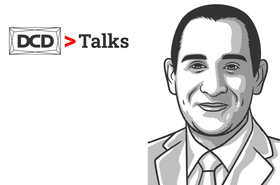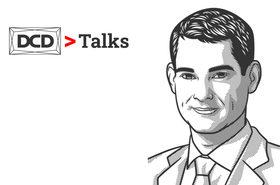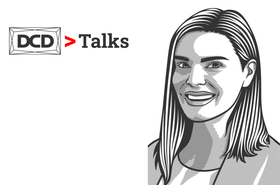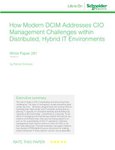It has been widely reported[1],[2] that the role of a chief information officer (CIO) is experiencing a seachange. IT is now at the center of business strategy, as digital technologies power and sustain the global economy. The criticality of IT in every aspect of business has driven CIOs from the purely tactical role of deploying, operating, and maintaining IT, to also focusing on business strategy.
CIOs increasingly have a leading role in functions such as driving business innovation, aligning IT projects with business goals, digitalizing business operations, and leading corporate organization change programs. This role expansion has made their job more critical and complex.
What has not been as widely reported, however, is that the traditional CIO role of IT service delivery has become more critical and complex as well. After all, a CIO’s impact on business strategy and execution depends on continuous IT service delivery.
The success of a CIO is ultimately rooted in a solid foundation of maintaining resilient, secure, and sustainable IT operations. But, in an environment of highly distributed hybrid IT, this becomes harder to do.
Modern data center infrastructure management (DCIM) software, optimized for distributed environments, plays an important role in maintaining this foundation for hybrid data center environments with distributed IT infrastructure.
Schneider Electric White Paper 281, “How modern DCIM addresses CIO management challenges within distributed, hybrid it environments” explains in some detail, using real world examples, how DCIM can make the electrical and mechanical infrastructure systems powering and cooling your distributed and edge IT installations more resilient, physically and cyber secure, as well as more sustainable.
Traditional DCIM was fundamentally designed and used for device monitoring and IT space resource planning, for larger, single data centers – but, the days of managing a single enterprise data center are over.
Business requirements are forcing CIOs to hybridize their data center and IT portfolio architecture by placing IT capacity in colocation facilities and building out capacity at the local Edge – sometimes to a significant degree.
In addition to managing and maintaining resilient and secure operations at all these sites, CIOs are now being asked to report on the sustainability of their IT operations. DCIM software tools are evolving so CIOs and their IT operations teams can do their jobs more effectively.
Modern DCIM offerings have simplified procurement and deployment, making it easier to get started and use the tool across your distributed IT portfolio. A single log-in will provide a view of all your sites and assets in aggregate or individually from any location.
Software and device firmware maintenance can be automated and done from afar. These newer offers not only make it easier to have remote visibility to power and cooling infrastructure to maintain availability, but they also address security and sustainability challenges.
How DCIM improves security
Data center environmental monitoring appliances can be used to not just detect and track temperature, humidity, fluid leaks, smoke, and vibration, but typically, they also integrate with security cameras, door sensors, and access cards to provide physical security for remote IT installations.
Monitored and controlled through DCIM software, these appliances help remote operations teams monitor and track human activity around critical IT as well as environmental conditions, which could also threaten the resiliency of business operations.
In the case of cyber security, modern DCIM solutions provide tools to help ensure network-connected power and cooling infrastructure devices do not become a successful target for a cyberattack.
All these devices, as well as the DCIM server and gateway, must always be kept up to date with the latest firmware or software patches. Cyber criminals are constantly working to find vulnerabilities in existing code to hijack devices to steal data, control devices, cause outages, etc.
New firmware and software patches not only fix bugs and provide additional performance enhancements, but they often address known security vulnerabilities. These code updates should be installed or applied as soon as they become available from the vendor. Without an effective DCIM solution, this process requires on-going discipline and action from the operations team.
On top of this, the security features and settings that were enabled and configured during the initial setup and installation need to be maintained throughout the life of the infrastructure device, network appliance, or management server/gateway.
By minimizing the number of users with the ability to change these settings, you reduce the chances of unintended or non-permitted changes being made. Beyond that, these settings must be checked regularly to ensure they remain set properly over time. This requires additional, on-going discipline and regular action by the ops team.
However, DCIM tools with a security assessment feature can simplify all this work described above significantly, at least, for power and cooling infrastructure devices. These assessments will scan all connected devices across the entire IT portfolio to provide a report highlighting out-of-date firmware and compromised security settings.
Some DCIM tools will also automate the updating of firmware and provide a means to perform mass configurations of security settings across multiple devices at once to greatly simplify the process.
How DCIM helps achieve sustainability goals
DCIM can be used to reduce your IT operation’s energy use and greenhouse gas (GHG) emissions, as well as give you basic information to start tracking and reporting sustainability metrics. Energy reductions can be accomplished using DCIM planning and modeling functions. These tools work to better match power consumption to the IT load by turning down or turning off idle infrastructure resources.
Alternatively, the software can make you aware of where to consolidate the IT load to reduce both IT energy consumption as well as the power losses from the supporting infrastructure. The new white paper describes several specific use cases of how DCIM planning and modeling tools can help reduce energy consumption.
Modern DCIM can also help CIOs and their teams to begin tracking and reporting basic sustainability metrics for their portfolios of on-premise data centers, Edge computing sites, and colocation assets. Some DCIM (“out of the box”) offers will collect data and report for individual sites and in aggregate:
- PUE: Current and historical
- Energy consumption: Usage at sub-system level to show in both real-time and historical trends of total consumption, IT consumption, and power losses
- Carbon footprint (Scope 2 emissions) based on local carbon emissions factors in total and by subsystem including IT, power, and cooling.
For these metrics to be meaningful, of course, it is important for the DCIM software to be able to communicate with and normalize data from all power and cooling infrastructure devices, regardless of make or model.
This ensures a complete picture of environmental impact. So DCIM tools and infrastructure devices that embrace common, open protocols (e.g., SNMPv3) and accommodate the use of APIs/web services should be used.
It’s worth noting that DCIM is still in the early phases of its evolution towards becoming an environmental sustainability reporting management tool for data center white space and Edge computing installations, in addition to being a tool for improving resiliency and security.
The white paper explores how DCIM will likely evolve in this direction in the near term. But, again, for most enterprise businesses who are just getting started with sustainability, modern DCIM tools can be used today to track and report the basics.
In summary
As the role of enterprise CIOs expands to driving business strategy, digitalization, and innovation, their traditional role of IT service delivery remains critical.
However, this role has become much more challenging, as IT portfolios have become more distributed geographically and spread among cloud, colocation, and the Edge. IT resiliency and security must be constantly monitored and maintained across an entire portfolio of IT assets.
At the same time, urgency and pressure are growing to track, report on, and improve environmental sustainability. Our new white paper describes in detail how DCIM monitoring and alarming as well as planning and modeling functions address these challenges and serve to make distributed, hybrid IT more resilient, secure, and sustainable.
More from Schneider Electric
-

DCD>Talks sustainability: the moment is now with Aamir Paul, Schneider Electric
In this DCD>Talk from the Schneider Electric Innovation day, we sit down with Aamir Paul to talk about the immediate issue of sustainability
-

DCD>Talks assets as a service with Philippe Arsonneau, Schneider Electric
We discuss assets as a service in this DCD>Talk, hosted at the Schneider Electric Innovation Day, with Philippe Arsonneau, an SVP at Schneider Electric
-

Innovations: For a sustainable world
An eBook exploring the innovations our industry needs to improve its sustainability



